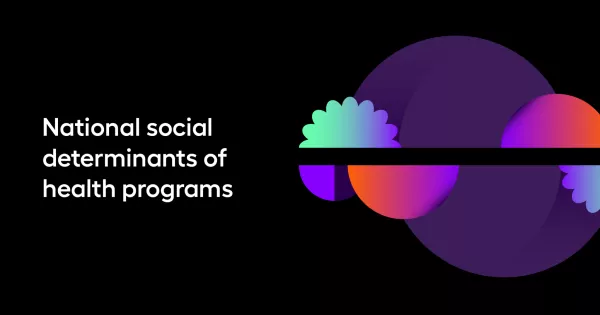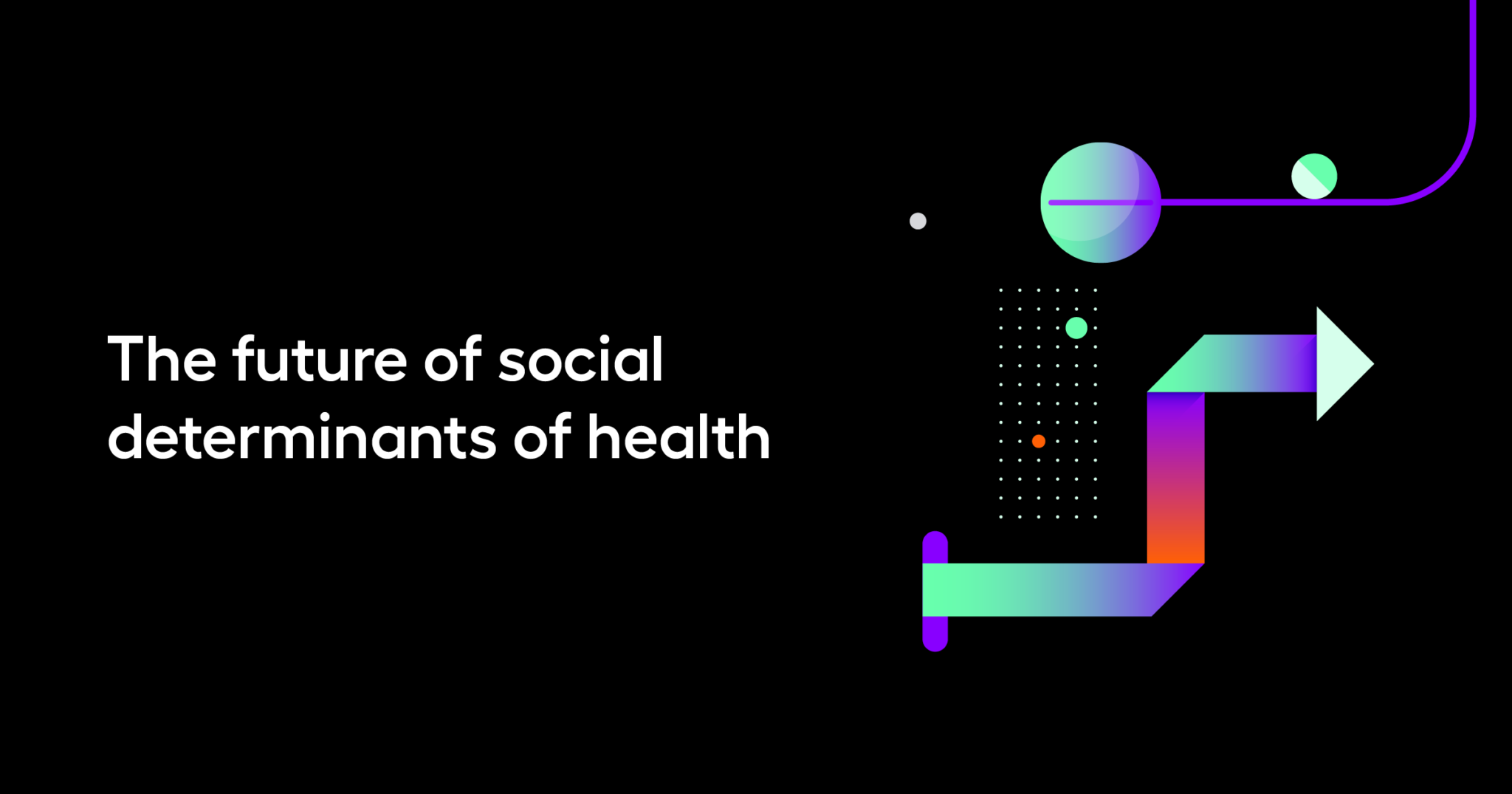How SDoH improves patient outcomes for community care organizations
Social determinants of Health (SDoH) — housing, behavioral health, addiction, drugs, alcohol, social isolation, childcare issues, food insecurity, violence, financial stability or lack thereof, employment, transportation — are systemic. They contribute to disparities between communities and even neighborhoods within the same city, in health and life expectancies. Addressing SDoH is critical to improving patient outcomes.
“A study that was done by Virginia Commonwealth University that looked at demographics in Boston, found that in the Back Bay, a well-to-do part of Boston, life expectancy was 92 years, and less than half a mile away in Roxbury, life expectancy was 59 years. And it’s all Boston,” said Dr. Richard Parker, Acadia Chief Medical Officer. “So I think it highlights how the social determinants of health are so determinative in outcomes and how we as a healthcare system need to do a better job.”
In Arcadia’s webinar, Health Equity Matters: How to use SDoH data to improve health equity, Dr. Parker, Dr. Douglas Carr, Chief Medical Officer at Umpqua Health, and Dr. Robin Traver, Senior Director of Medical Management at Umpqua Health, dig into how collecting and using SDoH data can inform care plans and help community care organizations improve patient outcomes by delivering the right services to people who need it most.
As more organizations look at services through a health equity lens, analyzing SDoH on the national and regional level will continue to grow in importance.

National SDoH programs
The Accountable Care Organization Realizing Equity, Access, and Community Health (ACO Reach) model is a national program designed by the Centers for Medicare and Medicaid Services. It focuses on health equity by working “to bring the benefits of accountable care to Medicare beneficiaries in underserved communities.”
CMS states it “will use an innovative payment approach to better support care delivery and coordination for patients in underserved communities and will require that all model participants develop and implement a robust health equity plan to identify underserved communities and implement initiatives to measurably reduce health disparities within their beneficiary populations.”
With its health equity tools, organizations can address disparities in healthcare.

Regional SDoH programs
Not all work is done on the national level. In fact, most of it is done by regional SDoH programs. One interesting example is Oregon, because it has utilized CMS waivers to create a Medicaid system unlike any other state, covering 25% of all Oregonians. A prioritized list of covered services, determined by a health evidence board of physicians and other professionals, emphasizes treatment of conditions that have high value, such as vision, dental, and behavioral health preventive care services. The state provides the premium dollars to local groups, not national companies or the state itself, called community care organizations (CCOs).
Dr. Carr notes that for CCOs, a significant amount of the premium is set aside to provide for services that are not true medical costs. They do not have CPT codes, but they really do have an impact on a person’s health.
“Things like providing temporary housing for someone who is homeless post-discharge, to help with wound healing, for example, or very specific in Oregon for the last couple of summers, air conditioners for heat waves and air purifiers for wildfires,” he said.

How Umpqua Health improved health of its patient population through SDoH data
The CCO, Umpqua Health, serves 35,000 Oregon Health Plan Medicaid members in Douglas County in western Oregon. In this rural area situated in the middle of the logging industry, they act primarily as the care coordinator and are involved in delivery of the healthcare and coordinating within the community.
Umpqua collects SDoH data through its Health Risk Assessment (HRA) which then triggers specific workflows and helps them identify members’ needs including medical, pharmacy, mental and behavioral.
“One of the core principles woven throughout all of our programs at Umpqua Health is to use a health equity lens to improve the delivery of health services,” said Dr. Traver. “We do this by addressing our members’ social determinants of health through care coordination, removing any barriers to successful health outcomes and addressing any disparities.”
Additionally, the Arcadia platform helps remind staff to address SDoH.
“We have the ability to automate some of the workflows to ensure that our staff are using that health equity lens and addressing the social determinants,” explained Dr. Traver.
Overall, analyzing the SDoH data within the HRA gives Umpqua a clear picture of the issues that are impacting the community.
“This really helps show us where we should focus our energy for improving the health of our population,” said Dr. Traver.

The Oregon wildfires and Umpqua Health’s Clean Air project
One example of Umpqua Health putting its SDoH data to use is in response to the devastating wildfires that have ripped through Douglas County, Oregon over the last few years.
The health impact of wildfire smoke has grown exponentially in Oregon. In the 2020 and 2021 fire seasons, there were 12 forest fires in Oregon that consumed more than 100,000 acres. The smoke from these fires negatively impacts the air quality for extended periods of time and can cause harm to people with respiratory issues. A study published in the American Journal of Respiratory and Critical Care Medicine in 2010 said by using air filtration to reduce indoor particle concentrations, predictors of cardiovascular morbidity—systemic inflammation and impaired endothelial function—can be favorably influenced.
Umpqua attempted to mitigate some of its members’ challenges by distributing a small number of air purifiers. Then, in 2022, Oregon Health Authority gained the ability to provide air purifiers on a large scale to counties that are most affected by wildfire. Douglas County has received 420 air purifiers so far to proactively distribute in anticipation of this year’s wildfire season.
In order to determine who should receive an air purifier, Umpqua used its Arcadia platform to identify who was clinically at-risk for respiratory complications by accessing the “Respiratory Risk Report” which predicts an individual’s future risk based on past events and claims data.
“Once identified, we use Arcadia’s functionality to notify members through a text that they qualify to receive this device and how to get it,” explained Dr. Traver. “The devices were then distributed through our transitional care clinic to our members and we have our community health workers delivering some to our homebound members.
So far, Umpqua has distributed 277 air purifiers. Some of the biggest hurdles it says are having the correct phone number for the member and getting members to trust that this is a legitimate offer to receive something free. Still, they note, of the people they have contacted, about 90% of them have accepted the air purifier.

The future of SDoH
Umpqua Health is a great example of a small, regional program that inspires others to work with the government and implement successful health equity programs for their populations.
“When we look at SDoH, it can feel overwhelming because they are deep systemic problems without simple solutions,” said Dr. Parker. “But we have to start somewhere and it’s project by project that we’re going to make progress with this.”
Want to know more about how to collect SDoH data and apply it for better patient outcomes? Watch the on-demand webinar or contact Arcadia to learn more.
